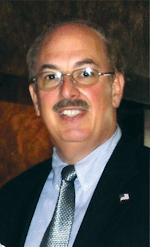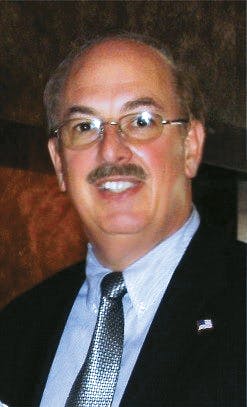Every law enforcement officer that I know would like to have a super partner… one that knows all the latest technology, can find background information in a snap, can provide backup in tense situations and of course, be easy to get along with. Well the time is approaching where every law enforcement officer can have that super partner. This partner can automatically communicate with dispatch and any other officers heading to, or already at, the scene of an incident; it can protect the officer from unseen dangers; it can generate all pertinent information in a moment’s notice; it can create reports and other time-consuming duties so that more time can be spent doing law enforcement activities.
Technologies like LTE (long-term-evolution) radio, heads up display, facial recognition, internet conductivity, Automatic Vehicle Location (AVL), routing software and charging trays are some of the devices that can be consolidated into one robotic partner. Because most officers operate from a patrol car, motorcycle, boat or Segway, the systems can be part of those vehicles. So now the vehicles become Robo partners to any officer.
Through simple voice commands, one could easily manage their new electronic partner. For example, the next generation’s police car, shown at last year’s APCO Conference in Philadelphia, PA, will let officers push a button on the steering wheel to talk to dispatchers; control vehicle equipment with voice commands, and see surveillance videos in real time on a dashboard computer screen. The system automatically checks license plate numbers on nearby cars against a database and notifies the officer via the dashboard display when there are any vehicles with outstanding violations. The system can take 8,000 to 10,000 photographs of license plates per shift and free the officer from having to write down license plates numbers and contact dispatch for the check. There is a component of the system that allows officers to take photos with a handheld device, generate traffic tickets by scanning any driver’s license barcode and do biometric fingerprint scanning on the scene with a wireless device. These technologies are available now but a larger throughput or pipe to dispatch by radio is needed.
So now let us look into the future to see what could be here soon with broadband radio technology.
Monday, March 19, 2020 Officer Smith finishes roll call in his cruiser with live feed to electronic meeting room where he learns of a rash of car thefts in his district. He is driving down First Street when suddenly an alarm goes off in his patrol car: the red BMW parked on the side of the road has been identified by electronic sensors as stolen. The license plate detection system records the tag, photographs and records the GPS location of the car, and sends the information back to dispatch automatically. As he approaches the front of the vehicle he sees that it is empty. He pulls to the side and steps out of his car. A sensor activates his hazard lights automatically, video cameras with direct live feed to the dispatch center begin recording the scene and a message is instantly sent to officers in the area, alerting them that Officer Smith stopped and is outside his vehicle. As he walks toward the BMW, his handheld infer-red detector on his LTE unit warns him that the engine is warm. Officer Smith looks up to see a suspect leaving a nearby store. When the man sees the patrolman near the BMW, he starts to run in the other direction. But the officer’s handheld LTE radio device has already captured photographs of the young man and has sent live feed to dispatch where an ID is made using facial recognition. Within seconds dispatch tells Office Smith the suspect is a minor and since he has been ID’d, the officer need not pursue and may continue his patrol… detectives will handle the arrest.
The technology to create and implement such a Robo partner is available today, provided a broadband radio system like LTE for Public Safety exists. Congress is currently reviewing the bill that would allow implementation of the D-block spectrum for Public Safety so these broadband radio systems could become a reality. Think of the many things that can be done today with our current smart-phones. Now by incorporating some of the same technology into law enforcement, along with the broadband channels of the D-block spectrum, development of a Robo partner can happen relatively fast. This capability would greatly help law enforcement officers and dispatch center operations to be synchronized. It would also bring more eyes and support to the officer on the scene with a new virtual backup Robo partner to help with all kinds of problems instantaneously.

Carl J. Rader
Mr. Rader’s experience in the field of electronics and radio engineering spans 30 years. His specific public safety project experiences include project management, RF system design, computer networks and emergency operations center design and construction. While employed as a project manager for Broward County, Florida he was directly responsible for the construction of a countywide 800MHz trunked simulcast radio network valued then (mid 1990s) at $33.9M. Later, Mr. Rader provided system engineering services for the construction of Broward’s E-911 primary and backup dispatch centers; a computer-aided dispatch system and mobile data systems. Recently, Mr. Rader was employed as the Director of Emergency Communications Support for Ada County, Idaho. There his project responsibilities included 700MHz trunked simulcast radio, VHF radio, mobile data, AVL and systems supportive of E-911 operations.
Mr. Rader is a graduate of the College of New Jersey and has a Masters Degree in Computer Information System from the University of Phoenix. He is a longtime member of the IEEE and holds two US patents in the field of maritime navigation. Carl is based in Coral Springs, Florida where he is serving TCS public safety clients and projects throughout Florida as well as Georgia and the central Gulf Coast.



